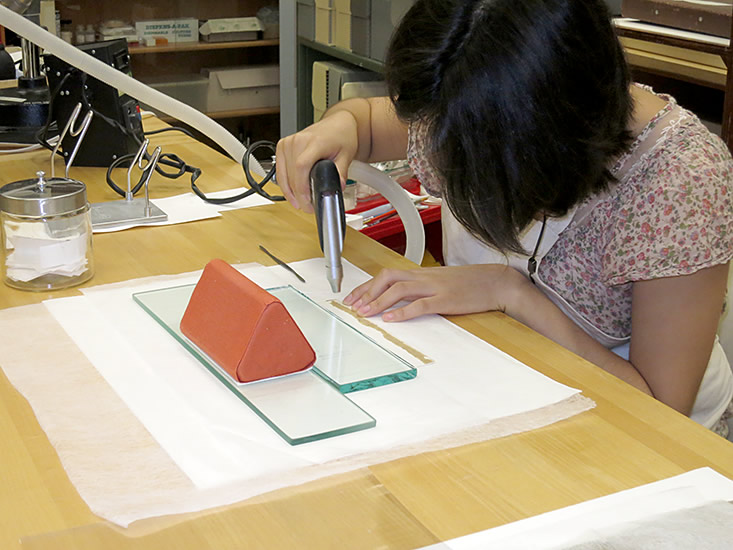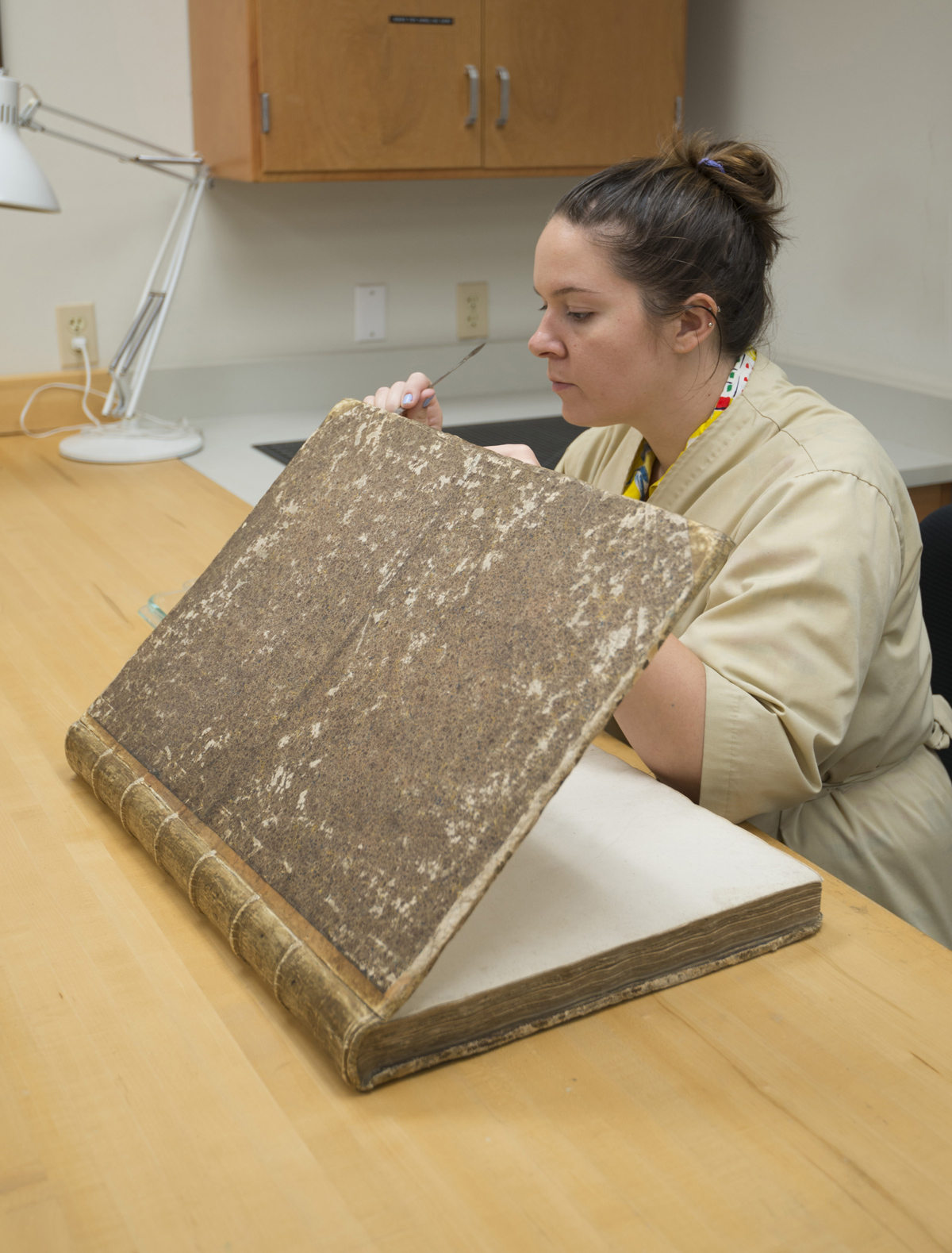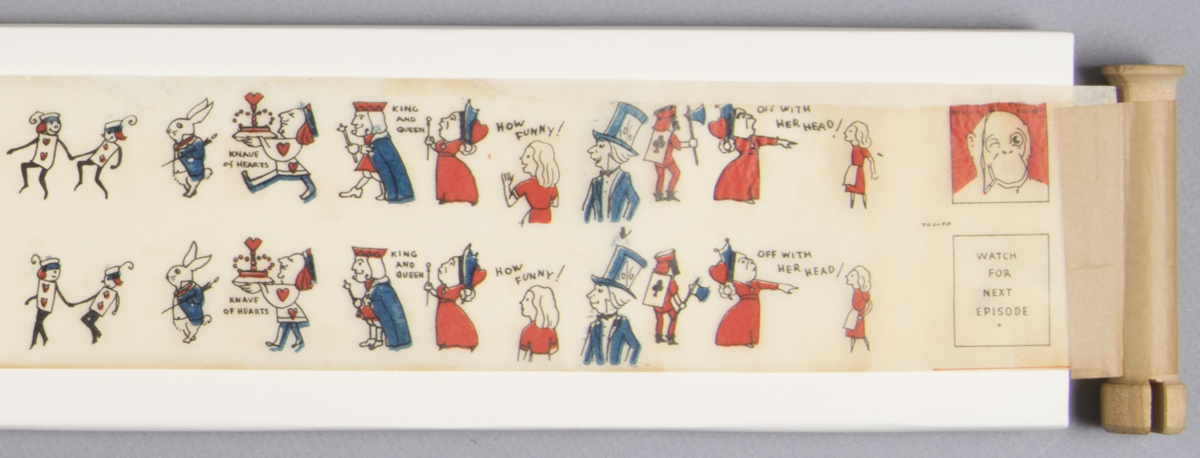The Harry Ransom Center’s collections offer amazing opportunities to find connections between diverse authors and artists.
[Read more…] about Before and After: Treatment allows Cecil Beaton’s photographs to be exhibited

[Read more…] about Before and After: Treatment allows Cecil Beaton’s photographs to be exhibited

The conservation department of the Ransom Center is responsible for the care and preservation of the Center’s collections. This feature highlights repair and conservation work on collection items.
[Read more…] about Before and After: Georgio Bonelli’s Hortus Romanus, published in 1774

The exhibition Alice’s Adventures in Wonderland features two 1933 toy paper film strips called Movie Jecktors. The film strips portray two of the most memorable parts of the Alice story: “Down the Rabbit Hole” and “The Mad Hatter.” Images and text are printed in three colors on 35″ strips of translucent paper. The strips are rolled onto wooden dowels and stored in colorfully printed little boxes. The Movie Jecktors would have been used with a toy film projector to create a simple animation.
The Ransom Center’s Movie Jecktors required conservation before they could be safely displayed in the galleries. Both the wooden dowel and the storage box, which is made of wood pulp cardboard, had a high acid content. An acidic environment is harmful to paper. The Movie Jecktors had become brittle and discolored, and there were many tears and losses to the paper. The film strips had been repaired in the past with pressure-sensitive tapes (the common tape we all use to wrap gifts). These tapes are never appropriate for repairing paper that we hope to preserve because they deteriorate and often darken over time and are also difficult to remove once in place.
As the Ransom Center’s paper conservator, I removed the tapes using a heated tool and reduced the residual adhesive using a crepe eraser. I mended the tears and filled the losses using Japanese paper and wheat starch paste. For the fills, the Japanese paper was pre-toned with acrylic paint to allow these additions to blend with the original paper. Areas of ink loss were not recreated.
Visitors to the exhibition can see the areas of the filmstrips that were damaged, but those areas are now stabilized and less distracting. This kind of treatment reflects the practice of conservation to preserve, but not “restore,” the object’s original appearance. Libraries, archives, and museums today often choose the conservation approach because it allows researchers and other visitors a better understanding of the object’s history, including damages that occurred, which may speak to the materials used in the object’s creation.
Related content:
Meet the Staff: Heather Hamilton, Head of Paper Conservation
Remarkable set of miniature Masonic theater scenery receives conservation treatment
World War I Red Cross poster undergoes conservation treatment for exhibition
Receive the Harry Ransom Center’s latest news and information with eNews, a monthly email. Subscribe today.
Please click on thumbnails to enlarge images.
Ransom Center Magazine is an online and print publication sharing stories and news about the Harry Ransom Center, its collections, and the creative community surrounding it.
Our monthly newsletter highlights news, exhibitions, and programs.
Copyright © 2024 Harry Ransom Center